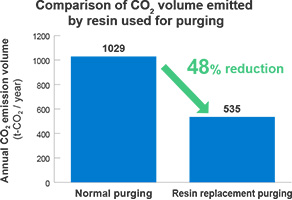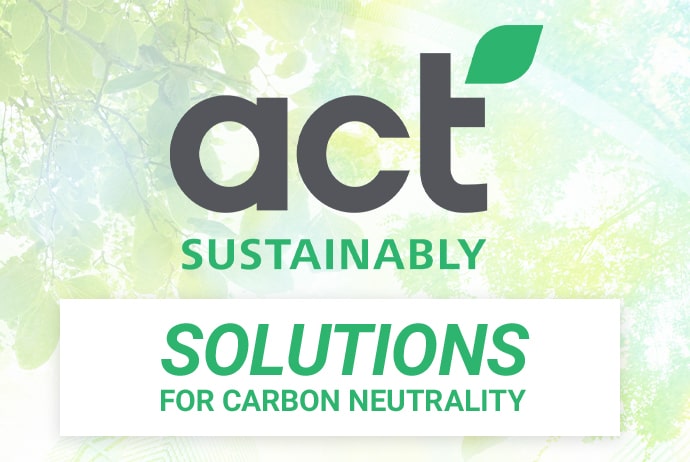- ページ内移動用のメニューです。
MENU
The Sumitomo Heavy Industries group perceives global environment protection and recycling-oriented economic activities as corporate social responsibilities. Thus, we are promoting environmental management.
Calls to reduce environmental impact of plastics have been increasing in recent years.
Below we would like to introduce some case studies that can be useful in achieving carbon neutrality, one of the key challenges in achieving sustainability.
As an injection molding machine manufacturer, we will continue to provide products and services contributing to the sustainability achievement.

Our business activities are aligned with Sustainable Development Goals (SDGs).

We are a member of the Japan Clean Ocean Material Alliance (CLOMA), which promotes efforts in solving marine plastic litter issue all around the world.
Carbon Neutrality and Injection Molding Machine
Carbon neutrality can be achieved by balancing greenhouse gas emission and absorption volume. For this purpose, it is necessary to enhance the reduction of carbon dioxide (CO2) emission, as well as other greenhouse gases, and increase its absorption.
Because reduction of CO2 emission volume is required during production process, injection molding machine must be equipped with functions reducing utility and resin consumption.
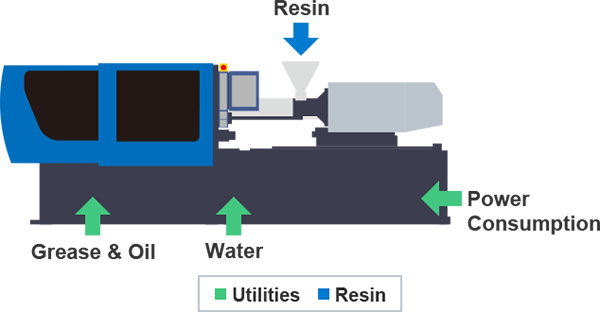
- Power Consumption
- Machine requires electric power for operations. Use of electricity relates to CO2 emission.
- Water
- Cooling tower provides water to machine. Cooling tower requires electric power for operations. Use of electricity relates to CO2 emission.
- Grease & Oil
- Fossil fuels and electric power are required for oil and grease production processes. Use of oil and grease relates to CO2 emission.
- Resin
- Fossil fuels and electric power are required for resin production process. Scrapping defective products and purging relates to CO2 emission.
* The volumes of CO2 emission, resin and utilities mentioned for case studies below depend on molding conditions and operation hours.
CO2 Reduction Case Studies
Use of electric molding machine
Reduction of electric power consumption, cooling water and oil by improving energy efficiency
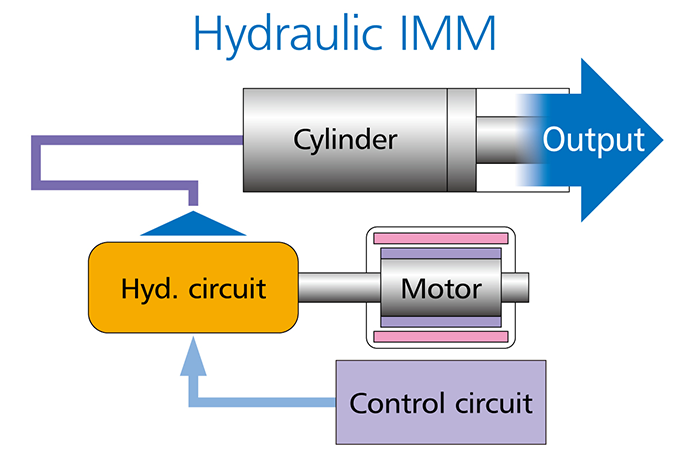
- Power is transmitted by oil
- Unsuitable for precise motion control
- Poor energy efficiency
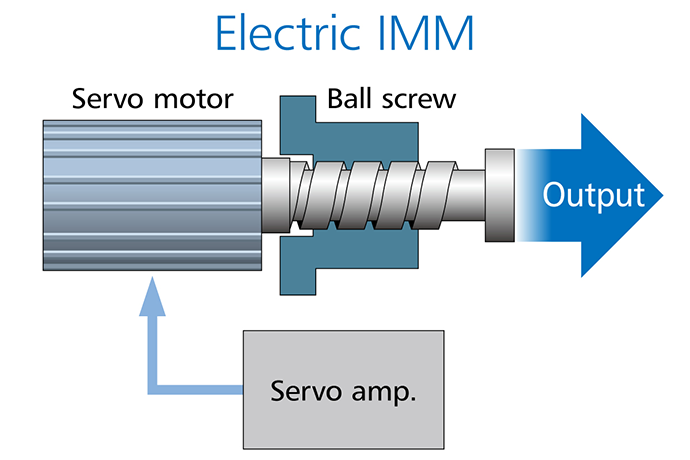
- Power is transmitted by ball screw
- Suitable for precise motion control
- Excellent energy efficiency
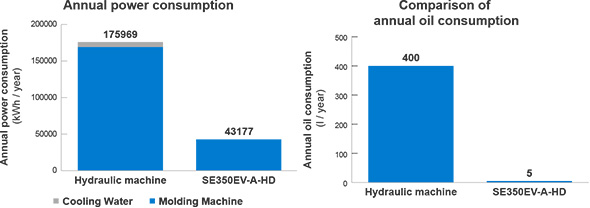
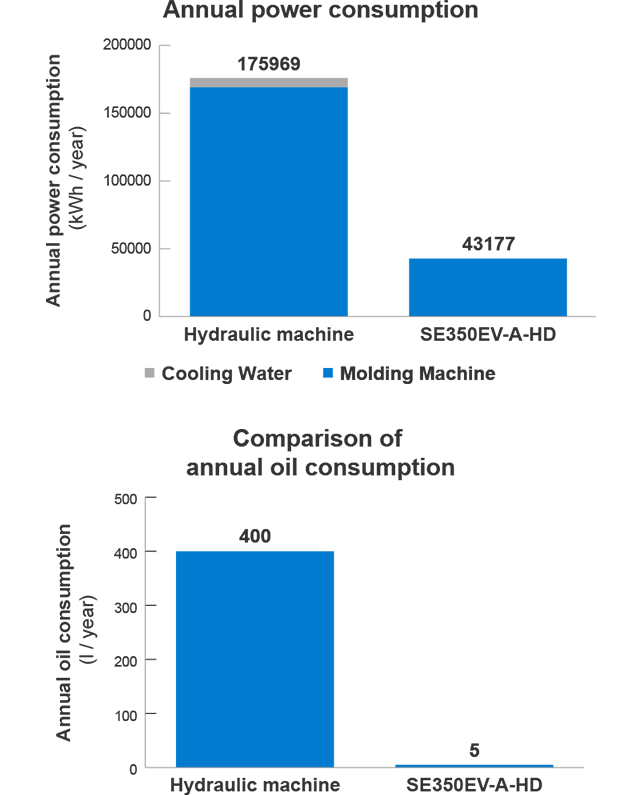
CO2 emission volume
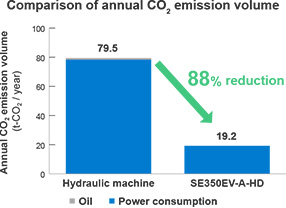
Zero-molding system
Minimization of clamping force and reduction of power consumption by MCM
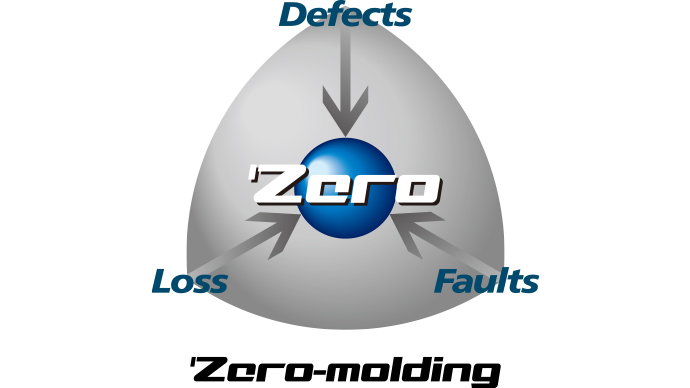
Zero-molding is an integrated application that helps to minimize Defects, Losses and Faults. It includes three technologies: MCM (mold clamping technology), FFC (filling technology), and SPS (operation technology).
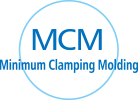
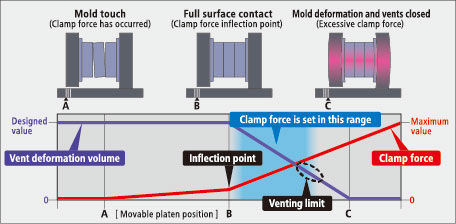
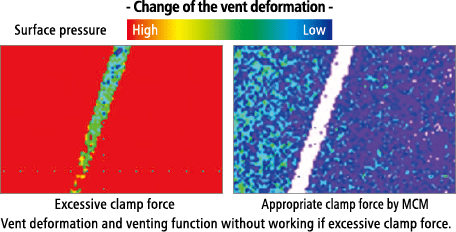
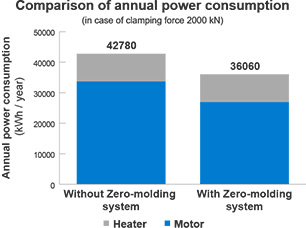
CO2 emission volume
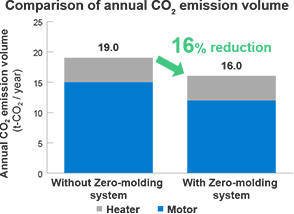

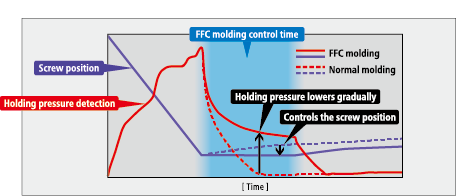
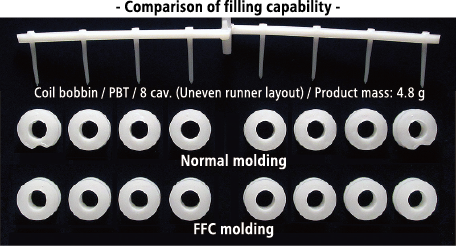
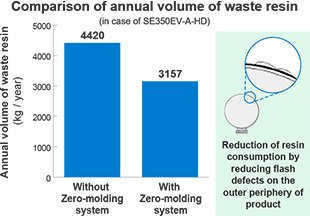
CO2 emission volume
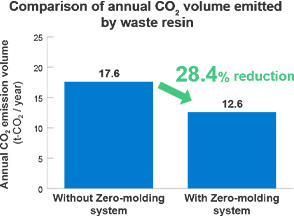
Grease supply system
Reduction of grease consumption by grease supply system optimization
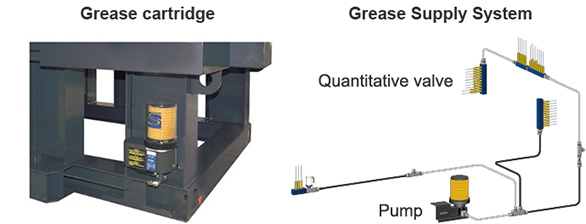
- Use of platen support liner guides
- Use of grease filled liner guides
- Use of grease filled bearings
- Optimization of grease supply channel
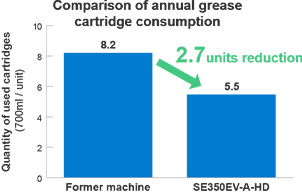
CO2 emission volume
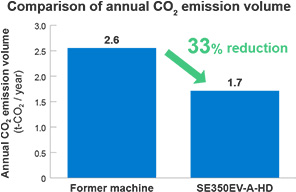
Purging function
for resin replacement
Reduction of resin necessary for color change by automatic switching of purging conditions
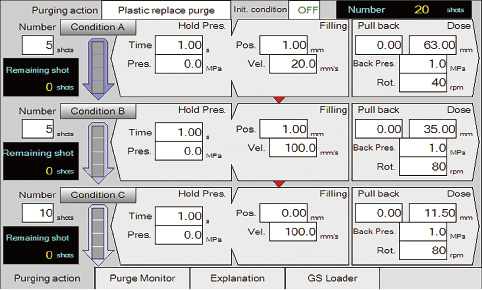
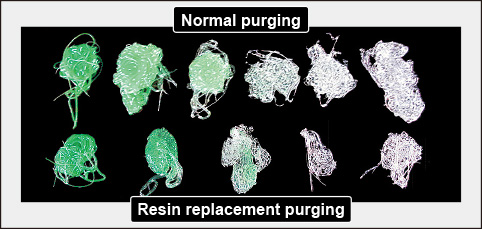
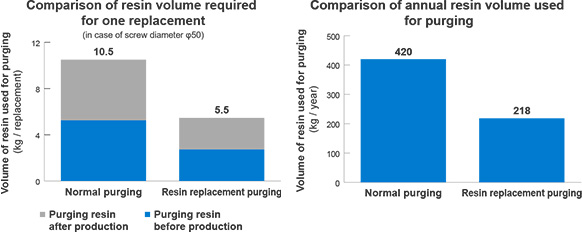
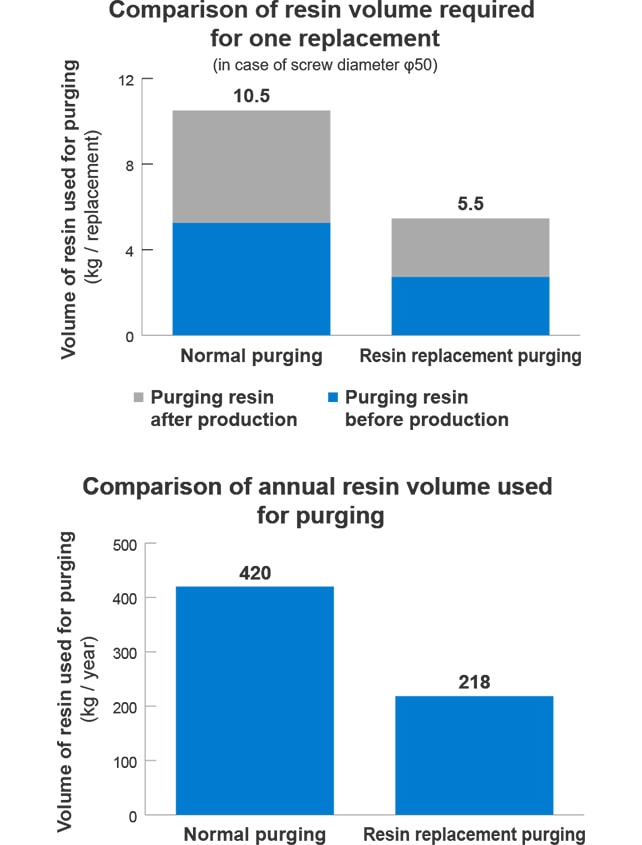
CO2 emission volume
